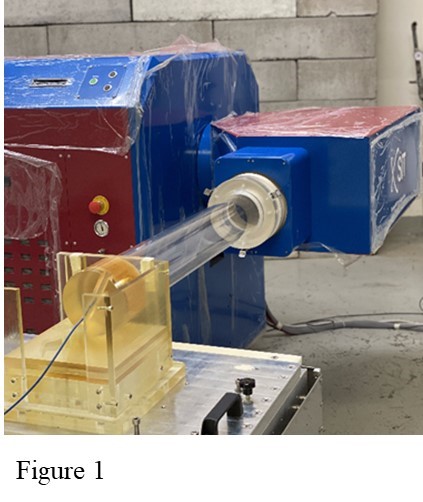Development of a novel diamond based Schottky diode detector for FLASH radiotherapy dosimetry
Gianluca Verona Rinati,
Italy
OC-0284
Abstract
Development of a novel diamond based Schottky diode detector for FLASH radiotherapy dosimetry
Authors: Gianluca Verona Rinati1, Giuseppe Felici2, Federica Galante2, Alessia Gasparini3, Lucia Giuliano4, Sophie Heinrich4, Matteo Pacitti2, Giuseppe Prestopino1, Verdi Vanreusel3,5, Dirk Verellen3, Claudio Verona1, Marco Marinelli1
1University of Rome "Tor Vergata", Dpt. Industrial Engineering, Rome, Italy; 2Sordina IORT Technologies S.p.A., S.I.T., Aprilia, Italy; 3Iridium Netwerk, Antwerp University, Faculty of Medicine and Health Sciences, Antwerp, Belgium; 4Institut Curie, University Paris-Saclay, PSL Research University, Orsay, France; 5SCK CEN, Research in dosimetric applications, Mol, Belgium
Show Affiliations
Hide Affiliations
Purpose or Objective
FLASH radiation therapy (RT) is a promising
technique for cancer treatment making use of radiation beams delivered at high
and ultra-high dose rate (> 40 Gy s-1). However, in these
irradiation conditions, some limitations hinder the translation of FLASH-RT
into clinical practice, including technical issues related to the dosimetric
characterization of FLASH beams. In particular, all commercially available
active real time dosimeters (i.e., ionization chambers, semiconductor
detectors, and scintillators) have shown to be unsuitable in ultra-high dose
per pulse (UH-DPP) conditions, primarily due to saturation problems and
nonlinearity of their response. The purpose of this study is to perform a
systematic experimental verification to address the major limitations in the
microDiamond (mD) device design affecting its response linearity in UH-DPP
conditions, and to develop a novel diamond detector specifically designed and
optimized for FLASH-RT applications.
Material and Methods
A commercial mD detector and
several diamond Schottky diode detector prototypes with different layouts were
produced at Rome Tor Vergata University in cooperation with PTW-Freiburg. The
rationale behind the design of the fabricated prototypes was to explore two key
parameters affecting device linearity under UHDR beams, namely the device
sensitivity and the series resistance of the Schottky diode.
The produced diamond
prototypes were characterized at two Electron UHDR beam facilities equipped
with ElectronFLASH Linac (SIT S.p.A., Italy). The typical experimental setup is
shown in Figure 1. The linearity of the detector response was tested by varying
the DPP up to a maximum value of about 26 Gy/pulse. This was performed by
changing the pulse duration, the applicator size and the SSD. Gafchromic films
were used as reference dosimeters.
Results
The response of the commercial mD was found to
completely saturate in UH-DPP regimes. However, by properly changing the
fabrication parameters of the diamond Schottky junction it was possible to
extend the linearity range of its response. In particular, a reduction of the
series resistance of the detector and/or a reduction of its sensitivity allowed to operate at much higher DPPs. This was achieved by increasing the doping
level of the p-type layer of the device, leading to a lower series resistance and by reducing the sensitive volume of the detector. Finally, two optimized
prototypes were produced, showing a linear response from conventional dose-rate
up to 26 Gy/pulse within a 5% uncertainty (Figure 2).
Conclusion
The obtained experimental results
demonstrated that properly designed diamond detectors can be suitable for UH-DPP
FLASH radiation therapy dosimetry.
The present work is part of the 18HLT04
UHDpulse project (http://uhdpulse-empir.eu/) which has received funding from
the European Metrology Programme for Innovation and Research (EMPIR) programme,
co-financed by the Participating States and from the European Union’s Horizon
2020 research and innovation programme.

